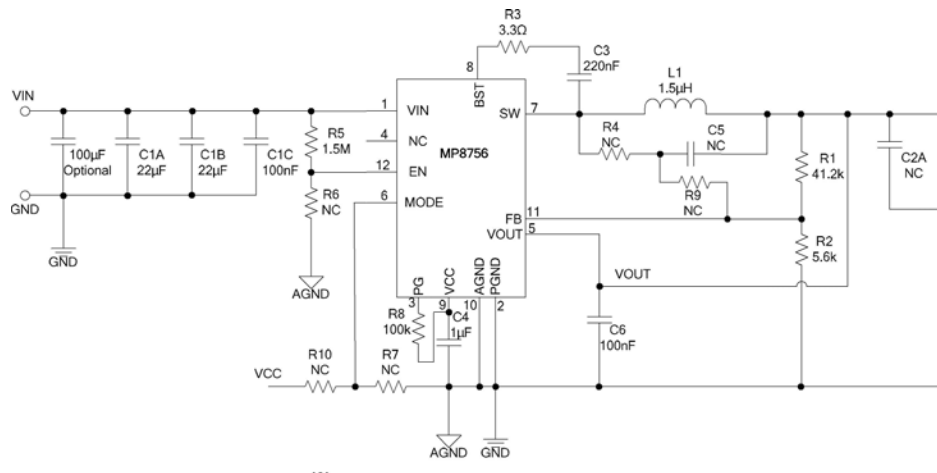
:opt no-lint
Executive Summary
Details
import Text.Printf
calcSpecs :: Float -> Float -> Float -> Float -> IO()
calcSpecs supIOut iOut aTemp dTemp = do
let usbPwrIn = 12.0 * supIOut
let usbPwrOut = 5.0 * iOut
let usbEff = usbPwrOut / usbPwrIn
let heatW = usbPwrIn - usbPwrOut
let degCperW = (dTemp - aTemp) / heatW
printf "Current Out %5.2f amps \n" iOut
printf "USB-C Efficiency %5.2f \n" usbEff
printf "Heat %5.2f watts\n" heatW
printf "DegC per Watt %5.2f \n" degCperW
USB Efficiency
calcSpecs 1.50 3.23 18.0 43.0
Current Out 3.23 amps USB-C Efficiency 0.90 Heat 1.85 watts DegC per Watt 13.51
LED Driver Efficiency
calcSpecs 2.0 4.3 16.0 43.0
Current Out 4.30 amps USB-C Efficiency 0.90 Heat 2.50 watts DegC per Watt 10.80
Feb 18, 2023 Update
Monday I am expecting an adjustable 4 amp USB load, and a variable load for the LED regulator. I don't have a way to force voltages other than 5V from the USB-C. I did check into it but the price for test boxes varies between \$1,200 and \$15,000.
-- Rough Thermal Calcs
tJA = 15 -- degC/Watt ... Chip mounted on JESD51-7 board (approx 7cm x 11cm)
tA = 25
vOut = 5.0
iOut = 4.0
eff = 0.8
-- If efficiency is 80% into a 20 watt load
-- then the power in the switcher is the total
-- power loss minus the inductor IR loss,
pDiss = (vOut * iOut) * (1 - eff) - (iOut * 10e-3)
printf "Buck Convert Power Loss = %5.2f watts" pDiss
incrT = tJA * pDiss + tA
printf "Temp increase at full power = %5.2f degC " incrT
putStrLn "But our layout isn't as good as the JESD51-7"
putStrLn "Max recommended temperature 150 degC"
Buck Convert Power Loss = 3.96 watts
Temp increase at full power = 84.40 degC
But our layout isn't as good as the JESD51-7
Max recommended temperature 150 degC
Feb 17, 2023 Update

Executive Summary
Details
To make sure we didn't have problems below is are some rough design calculations per the sometimes correct datasheet.
import Text.Printf
-- We don't want to blow up the chip
-- so compute vEN to be sure that
-- 4.0 > vEN > 1.4
vIn = 12
r6 = 300e3
pullDown = 600e3
rp = (r6 * pullDown) / (r6 + pullDown)
vEN = (vIn * rp) / (1.5e6 + 600)
printf "vEN at 12V -> %5.2f" vEN
printf "vEN at 24V -> %5.2f" (2*vEN)
vEN at 12V -> 1.60
vEN at 24V -> 3.20
r6 at 300k yields a good vEN for 12 and 24v
vRef = 600e-3
r1 = 41.2e3
-- Calculate R2 for output volage of 5V
r2 = (vRef * r1) / (5.0 - 0.6)
printf "r2 = %5.2f" r2
r2 = 5618.18
Board values for FB resistors are correct for Vout is 5v.
vPG = 0.4 -- at I = 4ma
vCC = 3.6 -- nominal
Inductor Choice
fSW = 700e3
deltaI = 2.8 -- 30% of output current
vOut = 5.0
vIn = 12.0
indL = (vOut/(fSW*deltaI)) * (1.0-(vOut/vIn))
printf "L -> %5.2e" indL
L -> 1.49e-6
This means that the ripple current will be 2.8 amps
Peak Inductor Current
iOut = 6.0
iPeak = iOut + (vOut / (2.0 * fSW * indL)) * (1.0 - (vOut / vIn))
printf "Ipeak -> %5.2e" iPeak
putStrLn "This is below the max switch current of 10A"
Ipeak -> 7.40e0
This is below the max switch current of 10A
Power Good Circuit
The VCC output is 3.6 volts and the $V_f$ of the LED is 1.8V so the series resistor should be approximatly,
rLED = (3.6 - 1.8 - 0.4) / 4e-3
printf "LED series resistor -> %5.2f" rLED
putStrLn "So make it 330 for about 4ma"
LED series resistor -> 350.00
So make it 330 for about 4ma
Talked with Joey.